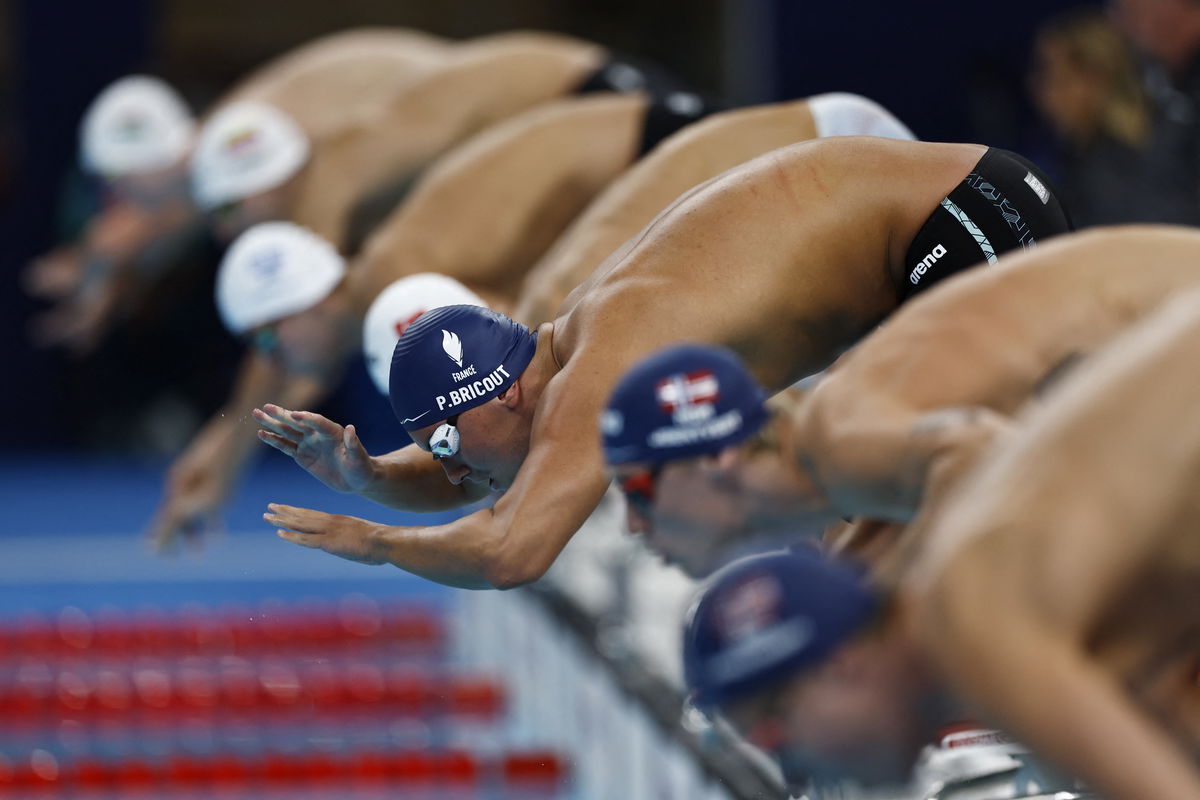
Reuters
Paris 2024 Olympics – Swimming – Men’s 800m Freestyle – Heats – Paris La Defense Arena, Nanterre, France – July 29, 2024. Pacome Bricout of France in action. REUTERS/Clodagh Kilcoyne

Reuters
Paris 2024 Olympics – Swimming – Men’s 800m Freestyle – Heats – Paris La Defense Arena, Nanterre, France – July 29, 2024. Pacome Bricout of France in action. REUTERS/Clodagh Kilcoyne
Every sport has that one game-changing moment that totally flips everything upside down, and swimming is no exception. Back in 2008, when full-body suits hit the scene, it was a total game changer. Michael Phelps really put those suits on the map—he rocked them at the Beijing Olympics. But guess what? That was the last time we saw those bad boys before they got banned, and it has been that way to this day amid the Paris Olympics.
Watch What’s Trending Now!
So why did they get kicked to the curb? First off, let’s chat about how these suits shook things up in swimming. Once these performance-enhancing suits came into play, swimmers smashed a whopping 43 world records in just one year! And during the Beijing Games, Phelps, while rocking the Speedo LZR body suit, pulled off an insane feat by snagging 8 gold medals while breaking seven world records.
You’re probably wondering how exactly these suits boosted performance. Well, here’s the deal: they made swimmers more buoyant so less of their bodies would drag through water—and less drag means faster speeds! Plus, the material used was slicker than human skin, which cut down resistance even more. Pretty crazy stuff!
ADVERTISEMENT
So, you might be thinking, Why not just hook every swimmer up with these fancy suits so everyone’s on the same level? It sounds good in theory, but here’s the deal: those full-body suits don’t come cheap. They’re super pricey to produce, which puts them out of reach for a lot of swimmers and could totally create an unfair advantage. That whole situation is why there was a ban put in place, and we’re still feeling the effects of it at the Paris Olympics.
Paris Olympics 2024- How did the ban on full-body suits come into place?
Unsurprisingly, the reaction to these full-body suits was negative, with many opposing them. Even Michael Phelps stepped up to voice his opinion, saying he wouldn’t compete again until they got the boot. After two solid years of these suits dominating the swimming scene, they finally got banned at the start of 2010 once everyone realized just how much they were boosting performance.
ADVERTISEMENT
Worn #onthisday in 2008 by Garrett Weber-Gale and Michael Phelps when the US team won the men's 4x100m freestyle relay at the Beijing @Olympics. The drag-reducing zippered polyurethane @speedo LZR Racer full-body swimsuit was banned the next year after numerous records fell. #OTD pic.twitter.com/n34ghzfNmo
— Worn On This Day (@WornOnThisDay) August 11, 2021
Many governing bodies, including the USA Swimming, supported this movement because nobody likes an unfair advantage. Then FINA rolled out some new rules about swimsuit designs and materials—goodbye to those full-body suits!
ADVERTISEMENT
They also laid down some guidelines regarding how much coverage suits could have. Now, if you’re watching the Paris Olympics, you’ll notice that for guys, swimsuits can’t go lower than the knees or higher than the navel; for gals, it’s knee-length to shoulder coverage only.
ADVERTISEMENT
ADVERTISEMENT
ADVERTISEMENT

